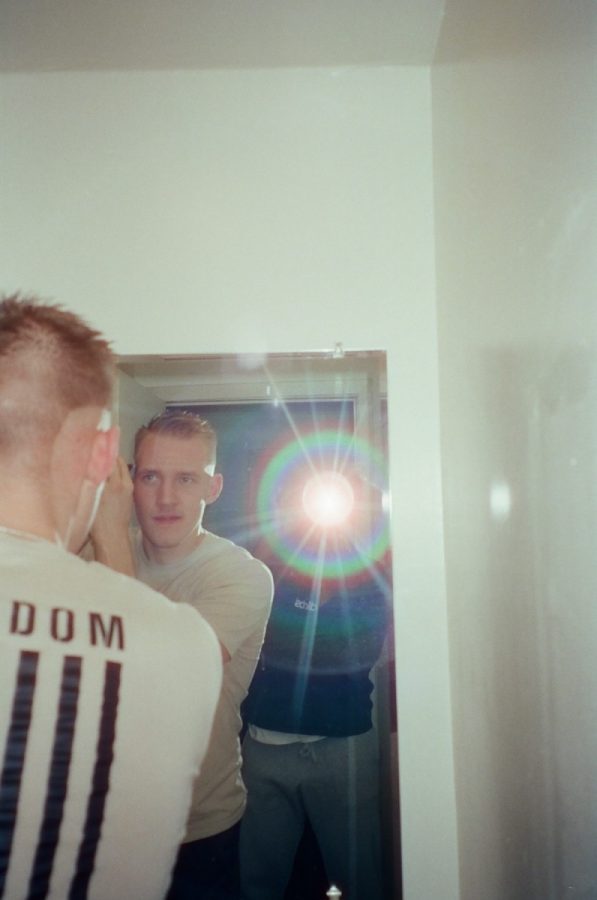The beautifully inconvenient world of film photography
How the world fell back in love with analog photography, despite its shortcomings
Photo by Oludare Obadiya
Point-and-shoot film cameras allow anyone to capture moments in a retro fashion
Whether for ethical or aesthetic reasons, there has been a recent fascination with making use of old things, and film cameras are the latest artifact to be dusted off and given new life.
Let’s get one of the more obvious points to make about film photography out of the way. It makes very little sense from a utility standpoint.
From professionals taking photos for clients to the self-appointed cameraman of every group of friends capturing the best and worst of late-night shenanigans, the invention of digital cameras has made the lives of picture-takers a trillion times easier.
Before every cell phone was also an HD camera and even professional cameras were user-friendly enough for a kid could be taught to use one, the finicky world of film photography was the only option.
I say finicky for a couple of reasons. One is the limitations and small margin for error that the film has.
The industry standard for smaller cameras was about 24-36 exposures per roll of film, which is almost adorable when considering how a smartphone can hold thousands of photos.
Not to mention, film is extremely sensitive to both light and heat. A second of unwanted exposure in the sunlight can ruin a whole roll of pictures, and the temperature problem is bad enough that most people store film in refrigerators if they don’t plan on using it in the immediate future.
The cameras themselves come with their own set of problems, ones that have only gotten worse as time has passed.
They often break and require repairs, but it’s not exactly like dropping your cracked iPhone screen off at the Apple Store. The places that sold these things are mostly long gone.
You’ll likely find yourself scouring the web for someone who may have the expertise to fix it, or — in my personal experience — using your Dad’s screwdrivers to poke around the complex and delicate machinery housed in most film cameras with Reddit as your only guide.
And even disregarding the maintenance issues, it has to be kept in mind that everything your iPhone does on its own to make a picture look good, (exposure, shutter speed, etc.) you would need to do manually.
And while it’s not too difficult to learn at an amateur level — even yours truly figured it out — it makes for a longer, more arduous process, even for a master photographer.
And after all that, pictures still need to be taken elsewhere to get developed, which could take a couple of hours or a couple of weeks depending on what you have access to.
Despite all this, film is still soaring in popularity and, despite all the reasons listed above, I’m loving every second of it.
More and more people are getting into film photography, amateurs and professionals alike. There are YouTube channels that catalog the film adventures of professional photographers who ditched their sleek high-quality digital cameras for their older counterparts.
Creators like Jason Kummerfeldt of Grainydays and Taylor Pendleton of Graincheck immediately come to mind.
And speaking of grain, it’s probably the one thing film brings to the table that digital can’t quite match.
The term refers to the texture of photos, and it’s what gives film that unique, retro look. It’s pretty difficult to replicate with digital filters, though that doesn’t stop Snapchat and Instagram from trying.
There are likely old photos of people’s parents and maybe even some super young ones of themselves in basements across the globe.
All of them have that signature film grain, which gives pictures taken on film some built-in nostalgia, something people can’t get enough of nowadays.
Much to the chagrin of some film loyalists, who basked in its obscurity for over a decade, they now sell small, reusable point-and-shoot film cameras at stores like Target and Urban Outfitters for under $40.
EBay is probably the best bet for the more technical, professional film cameras, though their popularity and scarcity have jacked up the prices. The Leica M-6 is sort of the holy grail for most serious film enthusiasts and it’s going for about $5000 right now.
It’s definitely ill-advised to go spending the kinda money that could buy a used Honda on a hobby you may or may not enjoy, but I would eagerly suggest the more moderately priced point-and-shoot varieties to anyone curious about the world of film.
The last note I’ll make about film photography is on the patience and thought it requires of the person behind the camera.
As a guy with a somewhat short attention span, it’s definitely a practice in patience for me to take my time and make sure each photo I take ends up exactly how I want it.
Even with the more user-friendly point-and-shoot film cameras, there is little room for mistakes. A bad picture can’t just be deleted to make room for another one. Digital can be as fleeting as one wants it to be, but film is permanent.
This makes it easier to see how respect for the field of photography seems to have dwindled over the years. It used to be a lot more meticulous. A photographer could do everything right and one small slipup could cost them a payday.
This finality just might be what our fast-paced, jack-of-all-trades generation needs.
Obadiya can be reached at obadiyod8891@uwec.edu

Oludare is a fourth-year journalism student and this is his fifth semester on The Spectator. He likes watching basketball and is pretty mediocre at it, but that doesn't stop him from playing it. He has a small but growing record collection and believes Woody Harrelson is a style icon and national treasure — fact not opinion.

